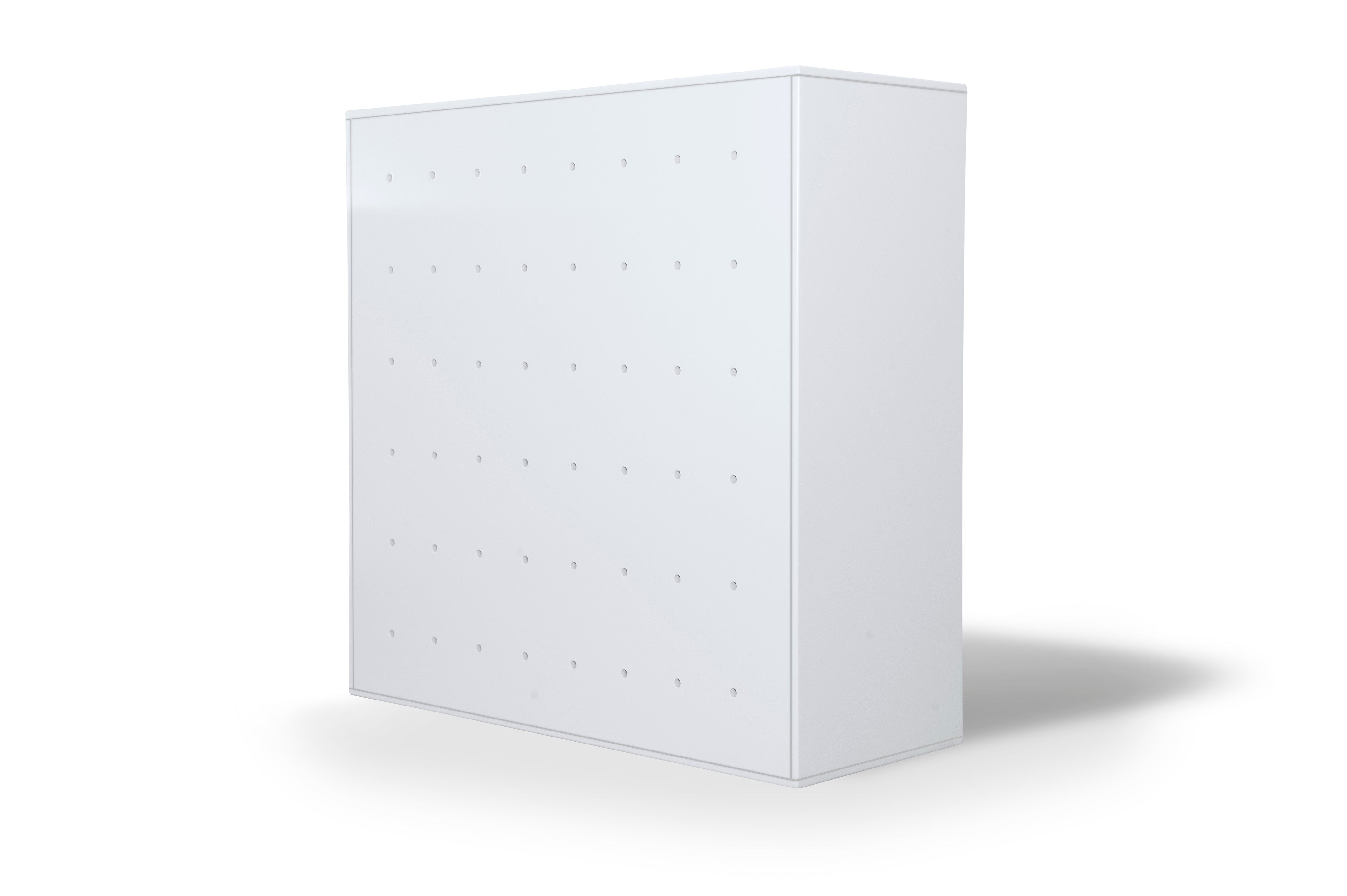Offers and product news directly to your email
Clear bass reproduction without electronics while also improving the reproduction of the midrange.
The attenuation of the bass snare made in Finland at lower frequencies is at its best in the 50-60 Hz range. Damping starts as early as 25 Hz, continuing moderately up to 250 Hz. The best damping of excessive bass energy is achieved when the BASSANs are placed behind the speaker line in the corners. The more BASSES you put in, the greater the reduction of excessive bass energy. Thus, music and movie sounds are reproduced more clearly and the listening experience improves and above all becomes more comfortable.
With two BASSANs, a good result is usually already achieved, e.g. in normal size listening mode, so you can enjoy a better and livelier playback when the bass sounds strong and the extra bass emphasis doesn't mess up the midrange.
What is a bass trap?
A bass trap refers to a sound-absorbing product that is placed in a room, into which longer sound waves of lower frequencies are absorbed. If bass traps are not placed in the room, long sound waves will be reflected back from the surfaces and cause phase reversals and emphasis. This leads to a very imprecise frequency response, i.e. reproduction in the range below 200 Hz.
When listening, this means that some bass frequencies are unnaturally emphasized and some disappear. Long sound waves have relatively high energy and require at least two bass traps to be placed behind the speaker line in the corners.
As a general rule, the more traps, the better the sound reproduction. With four to eight bass traps, you can even out too much bass rumble for a pleasant playback, and the playback of the midrange also works better.
The best place to invest?
The best location is usually the corners behind the speaker line and as close to the wall as possible. In the corner, that bass rag usually rumbles. The effectiveness of BASSAN can be tested at different points in the listening space.
There are no electronics in BASSAN and the best measuring tool is your own ears when aiming for the so-called to the original playback without any software correction.
When the most impressive places have been found, you can enjoy a better and livelier music playback when the bass doesn't drown everything out.
Technical information:
More information, Akustiikka.com
Clear bass reproduction without electronics while also improving the reproduction of the midrange.
The attenuation of the bass snare made in Finland at lower frequencies is at its best in the 50-60 Hz range. Damping starts as early as 25 Hz, continuing moderately up to 250 Hz. The best damping of excessive bass energy is achieved when the BASSANs are placed behind the speaker line in the corners. The more BASSES you put in, the greater the reduction of excessive bass energy. Thus, music and movie sounds are reproduced more clearly and the listening experience improves and above all becomes more comfortable.
With two BASSANs, a good result is usually already achieved, e.g. in normal size listening mode, so you can enjoy a better and livelier playback when the bass sounds strong and the extra bass emphasis doesn't mess up the midrange.
What is a bass trap?
A bass trap refers to a sound-absorbing product that is placed in a room, into which longer sound waves of lower frequencies are absorbed. If bass traps are not placed in the room, long sound waves will be reflected back from the surfaces and cause phase reversals and emphasis. This leads to a very imprecise frequency response, i.e. reproduction in the range below 200 Hz.
When listening, this means that some bass frequencies are unnaturally emphasized and some disappear. Long sound waves have relatively high energy and require at least two bass traps to be placed behind the speaker line in the corners.
As a general rule, the more traps, the better the sound reproduction. With four to eight bass traps, you can even out too much bass rumble for a pleasant playback, and the playback of the midrange also works better.
The best place to invest?
The best location is usually the corners behind the speaker line and as close to the wall as possible. In the corner, that bass rag usually rumbles. The effectiveness of BASSAN can be tested at different points in the listening space.
There are no electronics in BASSAN and the best measuring tool is your own ears when aiming for the so-called to the original playback without any software correction.
When the most impressive places have been found, you can enjoy a better and livelier music playback when the bass doesn't drown everything out.
Technical information:
More information, Akustiikka.com
Bassan akustointi bassan bassoansa Tarvikkeet add-to-cart //audiokauppa.fi/cdn/shop/products/bassan_setup_d296e263-4082-48f4-9929-d83e22e99ac4.jpg?v=1698149953 40154232029263 Default Title 422,00 //audiokauppa.fi/cdn/shopifycloud/shopify/assets/no-image-2048-5e88c1b20e087fb7bbe9a3771824e743c244f437e4f8ba93bbf7b11b53f7824c.gif https://audiokauppa.fi/en/products/bassan60-bassoansa?variant=40154232029263 InStock Default Title

